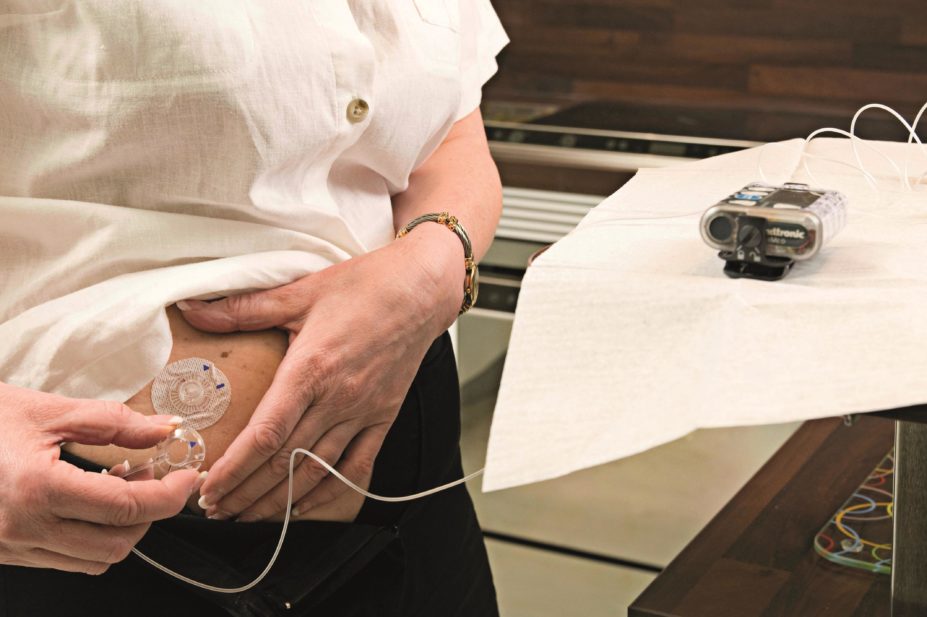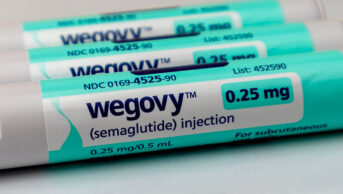
BSIP SA / Alamy
Diabetes groups have called for a review of how insulin pumps are approved for use and monitored once on the market, citing serious safety gaps in the current pre- and post-market regulatory systems of both the United States and the EU.
The European Association for the Study of Diabetes (EASD) and the American Diabetes Association (ADA) published a position statement[1]
on 16 March 2015, setting out healthcare-wide recommendations for “stimulating the adoption of a more rigorous, standardised and transparent approach to safety”. Better averting, recording and responding to device failures and user errors, they believe, would improve medical technology development and access, as well as therapy strategies.
The work by the ADA/EASD Diabetes Technology Working Group is the outcome of a one-and-a-half year study of current standards, regulatory regimes and research needs related to insulin pump therapy.
The US Food and Drug Administration (FDA) classifies insulin pumps as Class II (moderate risk) devices, or Class III (higher risk) if fitted with integrated continuous glucose monitors. Class III devices require premarket approval (PMA) to evaluate safety and effectiveness of clinical trial data, but Class II devices generally only require manufacturers to perform small “human factor” studies. In the EU, insulin pumps (Class IIb) are subject to a “lower level of safeguard, thereby posing a significant risk of harm being distributed in the market place”.
In terms of post-market surveillance, the difference between the two systems is that the FDA requires manufacturers to report and analyse adverse events involving any type of medical device, whereas such post-market evaluations are delegated to the national competent authorities (NCAs) in the EU. Crucially for the ADA/EASD, neither system obliges manufacturers to conduct ‘real-life’ follow-up studies.
The other regulatory recommendation concerns the need to establish a single public, fully-searchable international adverse events database, based on the FDA’s MAUDE (manufacturer and user facility device experience) system, which records all adverse events in the United States. The EU equivalent is EUDAMED (European databank on medical devices), but this is only accessible by NCAs and notified bodies, and is not public (hence this study relying only on MAUDE data).
Statement co-author Lutz Heinemann, chief executive officer and partner at Science & Co in Germany, gave an example[2]
of the insight good-quality registries can provide on the performance of specific devices: of the 24,000 insulin pump reports considered in the study, Animas pumps accounted for 81%; Roche’s Accu-Chek Spirit for 9.4%; Insulet’s Omnipod, 5.9%; Medtronic’s Minimed, 3.7%; and Tandem’s TSlim, 0.3%. However, in contrast with these figures, Medtronic’s Minimed had a 58% market share (according to SEC 6-K filings, 2012).
But a registry modelled on MAUDE is only a starting point, the authors say. “Technology is evolving rapidly for treating diabetes [and] we need to make sure we have sufficient data about how the devices are working once they hit the market, so that we can support patients by helping them understand how to prevent errors in using them,” says co-author Anne Peters, professor of medicine at the Keck School of Medicine at the University of Southern California.
References
[1] Heinemann L, Fleming GA, Petrie JR et al. Insulin pump risks and benefits: a clinical appraisal of pump safety standards, adverse event reporting and research needs. A joint statement of the European Association for the Study of Diabetes and the American Diabetes Association Diabetes Technology Working Group. Diabetes Care and Diabetologia 2015. doi: 10.1007/s00125-015-3513-z.
[2] ADA/EASD presentation at the EASD Diabetes Technology 2015 meeting, Düsseldorf, 11–12 February 2015.


